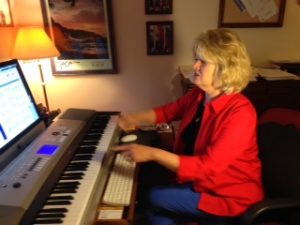Hello there! Welcome back to my blog! Hopefully, you have been thinking about a piece of music you might like to have fun with, creating an RPS. One factor that I should have covered in RPS #1: Students should sing the RPS a cappella. If we have done our job, moving from simple to complex (successive approximations), just give the starting pitch (usually the key note), and they “go.”
A few more considerations in writing an RPS:
4) Keep the examples short – Try a 4-6 measure example. Yes, I realize that eight measures might make more sense in music…but students see success. We’re going for SUCCESS!! My husband is a minister, and he will tell you, there are no bad short sermons. Can I get an “Amen?” You know it is true.
5) Coordinate the Keys – If the octavo is in F Major, create an RPS in F Major…not G Major. We are teaching for transfer. We want students to be able to use the knowledge they learn from one experience, and apply to another…so…write the RPS in the same key as the octavo. The keys must be exactly the same.
6) Simplify Modulations – If the piece eventually goes into another key, create a couple of short examples in the new key. The most difficult aspect of creating an RPS has to do with getting from one key to another…modulations in the voices. Practice getting the students to the new key, using the things they know…step-wise motion, half steps, etc. Make it easy…so important. Once you get to the new key…write an example for the new key. Ah…feels like home…a new home.
7) Fast Passages – Sing the passage slowly first…then gradually up-to-tempo. For all RPS sheets, I indicate a moderate tempo for rehearsing. With every repetition of the example, I choose a faster tempo, until I eventually reach the tempo notated in the score. If mistakes are heard, they need a slower tempo.
Move toward the exact notation you see in the score. Transfer…
8) Difficult Harmonies – Sing these chords vertically…and…slowly. We must give our singers time to get these harmonies in the ear, so that they can retrieve them later. We need to spend a little time with these sounds, so you might want to write these harmonies in whole notes first, then half notes, then quarters, etc. The goal is the score…the score…the score…the score.
Until next time…enjoy writing an RPS!

